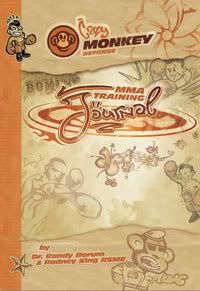You Gotta’ Have Faith
(Article first appears in Black Belt Magazine, May, 2008)
By Dr. Randy Borum
“Whether you think you can or think you can't - you are right” Henry Ford said. Our expectations for success and belief in our own abilities have powerful effects on our performance.
In the early 1970s, psychologists conducted an experiment in which they objectively measured the strength of each participant. Each person was assigned to arm wrestle another participant. Both participants believed that the objectively weaker one had a clearly superior level of strength. In 10 of the 12 arm-wrestling matches, the objectively weaker opponent prevailed. Their beliefs about who had superior strength mattered more than their real physical strength.
So, we need confidence, right? Yes, but the top martial artists and competitors have more than that. They have faith; a solid foundation of self-belief that transcends the outcome of any given performance. It is close to what psychologists call self-efficacy -a belief in one’s ability to successfully perform a task or action. It is task specific and it is grounded in self-belief.
Self-efficacy works together with skill and motivation to produce success. You have to want to achieve the outcome and have the ability to do so. When both those conditions are met, then the nature and degree of self-efficacy will often decide the winner.
Leading sport psychologist, Robert Nideffer, argues that the distinction between confidence and faith is an important one for the competitive athlete. While confidence can be easily shaken, faith endures. As Nideffer says, “Faith is believing in the absence of success.” If you are practicing a form, preparing for a rank testing, and you make the same mistake twice in a row, faith is what allows you to proceed confidently forward, assured that your next attempt will be successful.
In 1994, twenty years after losing his world heavyweight boxing title, George Foreman chose to re-enter the ring against the undefeated Michael Moorer. At nearly fifty years of age, many scoffed at the idea of Foreman competing, let alone fighting for a title. Moorer dished out a hefty dose of punishment on Foreman for nine rounds and seemed to be headed for a victory. Foreman, however, showed amazing heart and maintained faith in his ability. In the middle of the 10th round, Foreman delivered a straight right to Moorer’s chin than sent him to the canvas. Moorer could not recover through the ten-count and George Foreman was, once again, the heavyweight champion of the world.
One of the reasons that skilled athletes sometimes “choke” in competition, is that they allow themselves to get absorbed in some mistake. Instead of re-focusing and driving forward, they allow themselves to react to the error emotionally and to entertain negative, self-critical thoughts like “That was so stupid”; “I can’t handle this pace”; or “I thought I was better than this.”
It is important for any martial artist or competitive athlete not to let mistakes damage their self-belief. You must prepare yourself to know that there will be time to process and learn from any mistakes, but that time is not in the midst of a competition. Your faith in your ability allows you to persist through adversity.
During the 10,000 meter track finals in the 1972 Olympics, 23-year-old Lasse Viren of
Viren stayed focused, kept his faith, and never even entertained the thought of not continuing. His faith in his ability to win was greater than any disruption, disappointment or embarrassment his fall could cause.
Even the greatest competitors make mistakes or suffer defeat. They do not cease to be great because they err, but they do continue to be great because of how they respond to their errors. A foundation of faith and self-belief can defend your heart and mind against negative, destructive thoughts that seek to undermine your confidence. Without negative thoughts interfering, you can fully commit to action without being burdened by the outcome. You can strive for excellence without being burdened by a need for perfection.
How does a person acquire this kind of powerful faith? By choice and commitment. The true martial artists must first acknowledge that the pursuit of excellence is her or his own responsibility. With the responsibility, comes the need to chart a course of action – a plan for how it will be achieved. Then, the martial artist must commit – continuously – to giving his or her best effort in following the plan.
Psychologist and pragmatist philosopher William James said: "There is but one cause of human failure. And that is man's lack of faith in his true Self." That faith is rarely, if ever, bestowed on anyone. It is cultivated and earned by daily choices. Choosing not to ruminate or tolerate destructive negative thoughts. Choosing thoughts and actions that will promote their best performance. Always moving forward, looking for opportunities to learn. Growing from mistakes, rather than suffering from them. Striving for your personal best, rather than for perfection.



